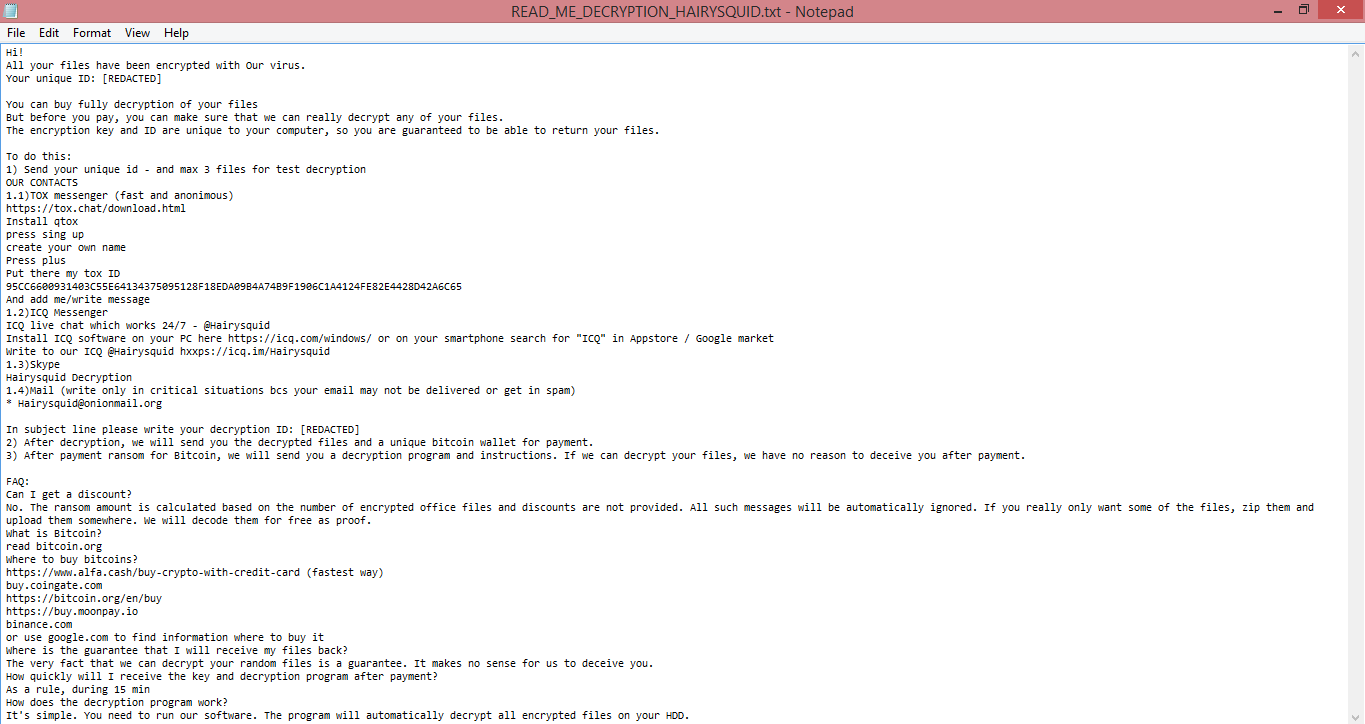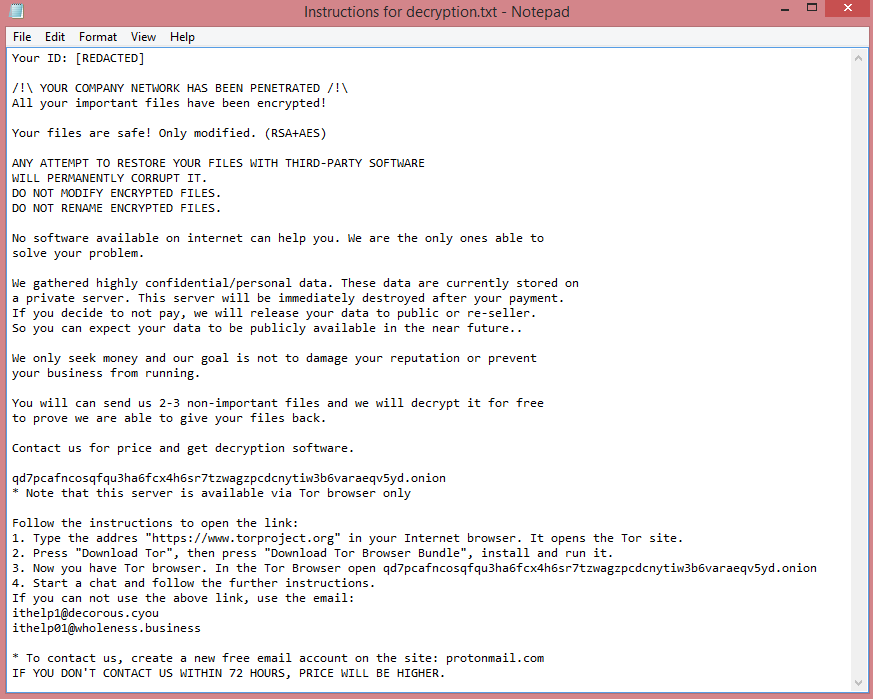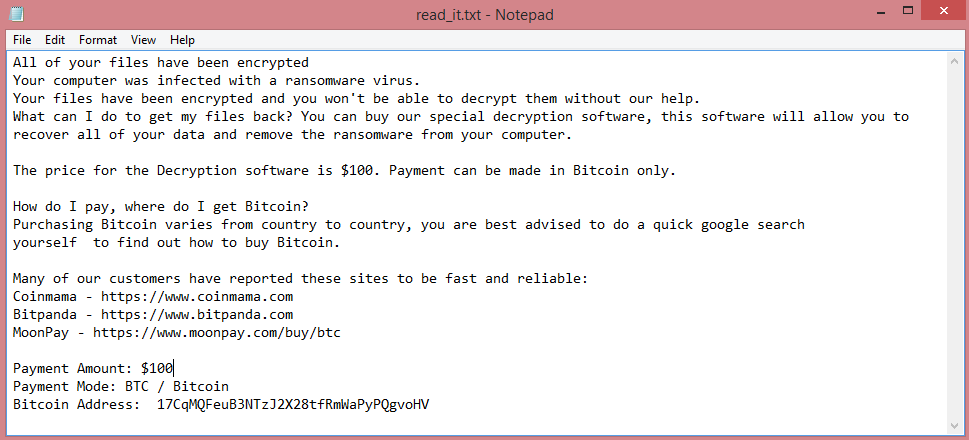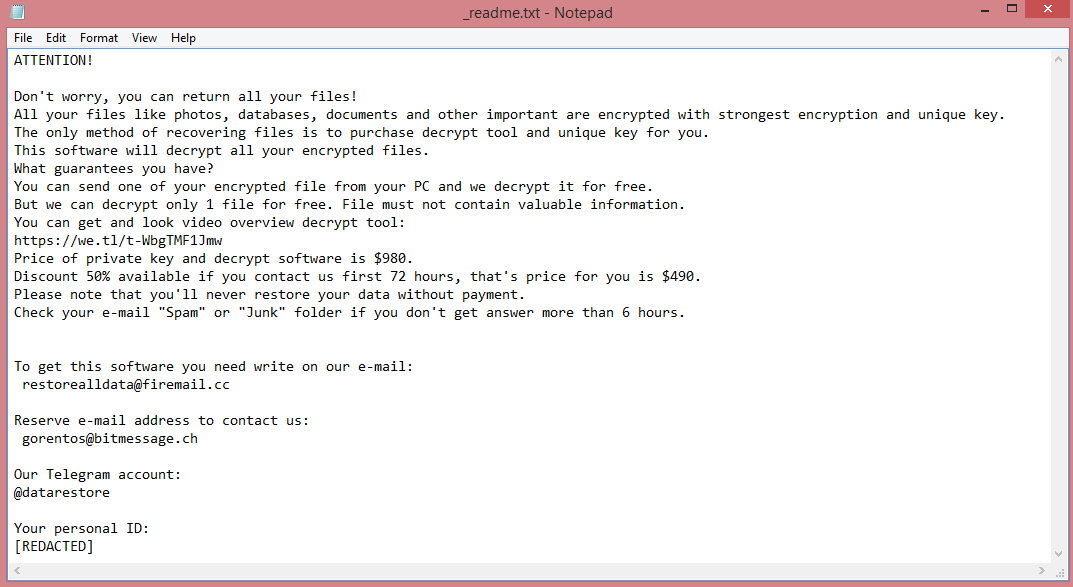
What is Kiwm ransomware?
Kiwm is a malicious program (malware) that encrypts all files on your computer so that it can demand money for returning them. This category of malware is known as ransomware.
This virus is not unique in the slightest; it belongs to the STOP/Djvu ransomware family, which contains thousands of viruses very similar to this one (like Kitz and Jywd).
All STOP/Djvu viruses behave in the same way. They give a four-letter extension to the encrypted files (in our case, .kiwm file extension). They create a ransom note named “_readme.txt”, which always contains the same text (read it on the image above if you want). And they always demand $980 for decryption.
Which is a fairly steep price, don’t you think? The hackers provide a 50% discount if you pay quickly, but $490 is still a lot. Especially if you consider that many victims of ransomware attacks that choose to pay the hackers don’t get their files back. The criminals simply take the money and disappear.
This is why you should not pay the hackers and read our guide instead. It will help you remove Kiwm ransomware and decrypt .kiwm files without getting involved with these cyber-crooks.
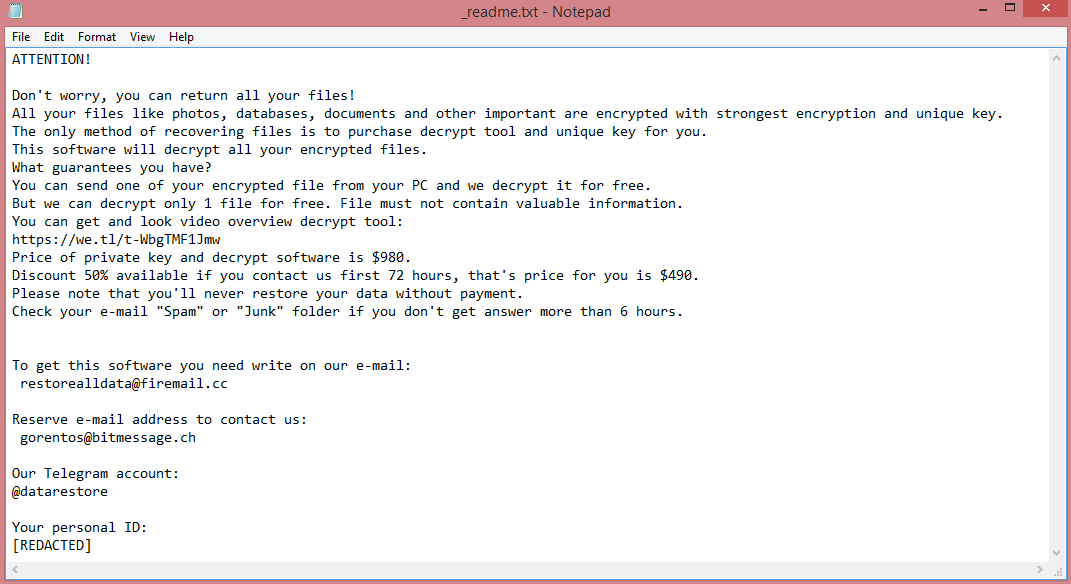
![Proton ransom note:
~~~ Proton ~~~
What happened?
We encrypted and stolen all of your files.
We use AES and ECC algorithms.
Nobody can recover your files without our decryption service.
How to recover?
We are not a politically motivated group and we want nothing more than money.
If you pay, we will provide you with decryption software and destroy the stolen data.
What guarantees?
You can send us an unimportant file less than 1 MG, We decrypt it as guarantee.
If we do not send you the decryption software or delete stolen data, no one will pay us in future so we will keep our promise.
How to contact us?
Our Telegram ID: @ransom70
Our email address: Kigatsu@tutanota.com
In case of no answer within 24 hours, contact to this email: Kigatsu@mailo.com
Write your personal ID in the subject of the email.
Your personal ID: [REDACTED]
Warnings!
- Do not go to recovery companies, they are just middlemen who will make money off you and cheat you.
They secretly negotiate with us, buy decryption software and will sell it to you many times more expensive or they will simply scam you.
- Do not hesitate for a long time. The faster you pay, the lower the price.
- Do not delete or modify encrypted files, it will lead to problems with decryption of files.
This is the end of the note. Below you will find a guide explaining how to remove Proton ransomware and decrypt .kigatsu files.](https://www.computips.org/wp-content/uploads/2023/04/how-to-remove-proton-ransomware.png)
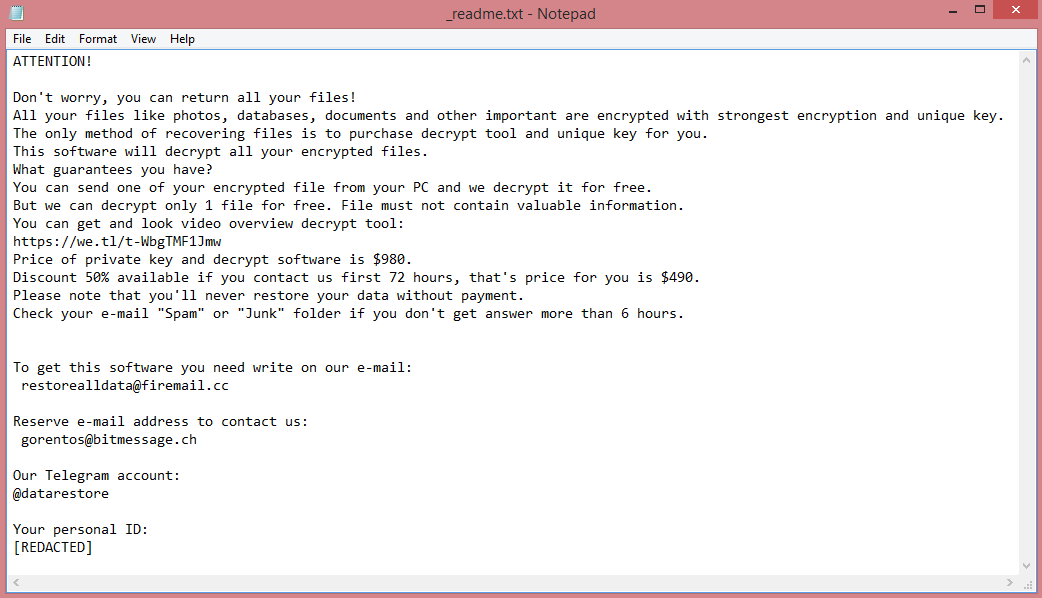
![BlackByteNT ransom note:
BLACKBYTE NT
All your files have been encrypted, your confidential data has been stolen,
in order to decrypt files and avoid leakage, you must follow our steps.
1) Download and install TOR Browser from this site: https://torproject.org/
2) Paste the URL in TOR Browser and you will be redirected to our chat with all information that you need.
3) If you read this message thats means your files already for sell in our Auction.
Everyday of delaying will cause higer price. after 4 days if you wont connect us,
We will remove your chat access and you will lose your chance to get decrypted
Warning! Communication with us occurs only through this link, or through our mail on our Auction.
We also strongly DO NOT recommend using third-party tools to decrypt files,
as this will simply kill them completely without the possibility of recovery.
I repeat, in this case, no one can help you!
Your URL: [REDACTED]
Your Key to access the chat: [REDACTED]
Find our Auction here (TOR Browser): [REDACTED]
This is the end of the note. Below you will find a guide explaining how to remove BlackByteNT ransomware and decrypt .blackbytent files.](https://www.computips.org/wp-content/uploads/2023/04/how-to-remove-blackbytent-ransomware.png)
![WiKoN ransom note:
ATTENTION!
All your files have been encrypted
And their decryption will cost you 0.05 bitcoin.
To start the decryption process follow the steps below
Step 1) Make sure you send 0.05 bitcoin to this wallet:
bc1q0u997r79ylv9hrc7zcth0mvr3mjua6324hxnkc
Step 2) Contact me at this email address: wikon@tuta.io
With this Subject: [REDACTED]
After the payment has been confirmed,
you will receive the decryptor and the keys for decryption!
Other information:
If you don't own bitcoin, you can buy it here very easily
www.coinmama.com
www.bitpanda.com
www.localbitcoins.com
www.paxful.com
You can find a larger list here:
https://bitcoin.org/en/exchanges
If the payment is not made in 2 days, I will consider that you do not want to decrypt your files,
and therefore the keys generated for your PC will be permanently.deleted.
This is the end of the note. Below you will find a guide explaining how to remove WiKoN ransomware and decrypt .WiKoN files.](https://www.computips.org/wp-content/uploads/2023/04/how-to-remove-wikon-ransomware.png)

